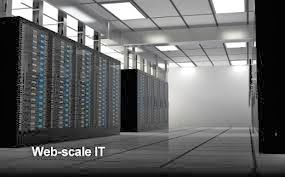Here is an interesting story of Caterpillar undergoing metamorphosis to go on to become a Butterfly which gives insight into the struggle involved in the process of change and often leading to exciting results and a colorful future. The story is not new, the objective of the post is to trigger thoughts to get a fresh perspective, reflect on the theme... and share the insight.
Once a little boy was playing outdoors and found a fascinating caterpillar. He carefully picked it up and took it home to show his mother. He asked his mother if he could keep it, and she said he could if he would take good care of it.
Once a little boy was playing outdoors and found a fascinating caterpillar. He carefully picked it up and took it home to show his mother. He asked his mother if he could keep it, and she said he could if he would take good care of it.
The little boy got a large jar from his mother and put plants to eat, and a stick to climb on, in the jar. Every day he watched the caterpillar and brought it new plants to eat.
One day the caterpillar climbed up the stick and started acting strangely. The boy worriedly called his mother who came and understood that the caterpillar was creating a cocoon. The mother explained to the boy how the caterpillar was going to go through a metamorphosis and become a butterfly.
The little boy was thrilled to hear about the changes his caterpillar would go through. He watched every day, waiting for the butterfly to emerge. One day it happened, a small hole appeared in the cocoon and the butterfly started to struggle to come out.
At first the boy was excited, but soon he became concerned. The butterfly was struggling so hard to get out! It looked like it couldn’t break free! It looked desperate! It looked like it was making no progress!
The boy was so concerned he decided to help. He ran to get scissors, and then walked back He snipped the cocoon to make the hole bigger and the butterfly quickly emerged!
As the butterfly came out the boy was surprised. It had a swollen body and small, shriveled wings. He continued to watch the butterfly expecting that, at any moment, the wings would dry out, enlarge and expand to support the swollen body. He knew that in time the body would shrink and the butterfly’s wings would expand.
But neither happened!
The butterfly spent the rest of its life crawling around with a swollen body and shriveled wings.It never was able to fly…
As the boy tried to figure out what had gone wrong his mother took him to talk to a scientist from a local college. He learned that the butterfly was supposed to struggle. In fact, the butterfly’s struggle to push its way through the tiny opening of the cocoon pushes the fluid out of its body and into its wings. Without the struggle, the butterfly would never, ever fly. The boy’s good intentions hurt the butterfly.
As you go through school, and life, keep in mind that struggling is an important part of any growth experience. In fact, it is the struggle that causes you to develop your ability to fly. Being in the comfort zone takes you nowhere. Lending a helping hand to others is no doubt appreciable, however the tendency to overprotect could be counterproductive.
If the process of growth or maturity involves some struggle, one should let it happen in the interest of individual going through it, as it may involve great learning or acquisition of new skills/strengths.
When did you do a new thing first time in the recent past? What was your feeling while doing it? How often do you do new things? The answers these questions will tell you whether you tend to be in your comfort zone or out of it.
What is the end of the life of Caterpillar, is the starting of the life for a Butterfly.
Welcome into the flying club!!!
If the process of growth or maturity involves some struggle, one should let it happen in the interest of individual going through it, as it may involve great learning or acquisition of new skills/strengths.
When did you do a new thing first time in the recent past? What was your feeling while doing it? How often do you do new things? The answers these questions will tell you whether you tend to be in your comfort zone or out of it.
Change is the hallmark of the natural process of evolution. Struggle or discomfort signifies the process of change which should be welcomed. Change is never easy, you fight to hold on, you fight to transform. So do not run away from it, rather embrace it. Life does not get better by chance, but by change.
Welcome into the flying club!!!
On this note, I would like to wrap up my postings for the year 2013. I started this blog in October'13 and with 17 posts and over 1800 page hits, I think I was able to connect with good number of viewers in a short time. I look forward to to share some more interesting thoughts regularly on Leadership, Technology and Businesses with all of you in the coming year as well.
You are always welcome to visit my virtual home, "Brindavanam" where you will mostly likely find some healthy and interesting stuff for reflection, rumination and sharing. I'll be pleased to know your reactions and feedback.
Thank you very much for your patronage!
Happy holiday season!












